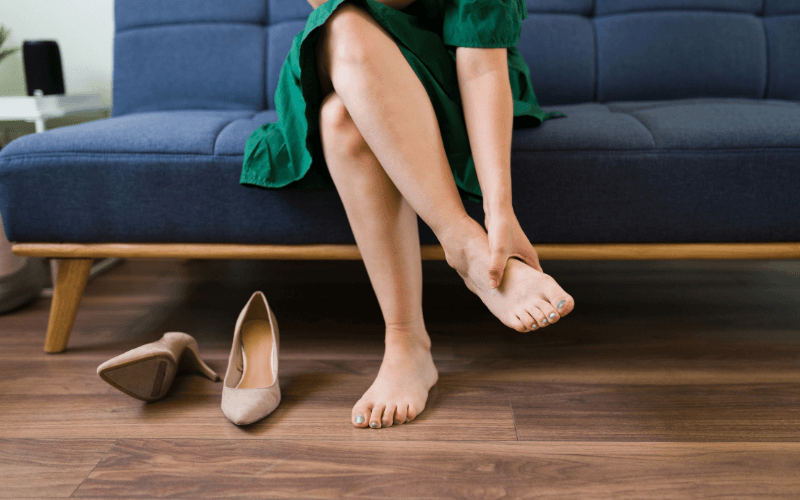Corns and calluses are thick, tough layers of skin caused by repeated pressure or friction. Hard skin can easily develop into a corn or callus and these lead to painful problems.
Many people suffer from these common foot conditions, but some are more prone to corns and calluses than others. This can be due to lifestyle habits or a genetic predisposition.
How to Spot a Corn or Callus
Hard corns: small lumps of hard skin which develop on the tops of your toes.
Soft corns: these have a rubbery texture and lurk between your toes.
Seed corns: these form in tiny clusters on the soles of your feet.
Calluses: larger patches of hardened skin that appear beneath your heels, the balls of your feet and the big toe.
Both corns and calluses form in weight-bearing areas on your soles or the tops of your toes where they rub against your shoes.
Are Your Genetics to Blame?
Structural problems such as flat feet or high arches can be genetic. These conditions alter the structure and function of your feet which impairs their ability to distribute and absorb pressure correctly.
Flat feet or high arches create conditions such as hammertoes, bunions and overlapping toes, all of which apply unnatural stress and friction in the wrong places. Corns and calluses are sure to follow if these situations are left untreated.
Inherited traits may also affect the thickness and resilience of your skin. Some people’s skin is tougher than others; if your parents had thick or thinner skin this can be passed down to you.
Lifestyle and Footwear
If your work involves standing or walking for long periods, you’re placing extra pressure on your feet and toes. For sportspeople, dancers or anyone who does a lot of physical activity the stress on the lower limbs is considerable and can lead to hard skin and sore patches.
It’s essential you wear the right shoes for your activities. The wrong footwear is a major cause of corns and calluses. Even if you’re simply driving to the office, your shoes must support and cushion your feet correctly.
If your toes are squashed or constantly rubbed pressure points will form. Wearers of high heels are particularly susceptible as all your weight is forced forward onto the front of the foot and your toes are squashed together – the perfect recipe for calluses and corns.
Health Conditions
Arthritis often affects the many joints of the feet, ankles and toes. Arthritis symptoms include inflammation, pain and swelling in the joints which can lead to structural changes – a situation which causes unnatural friction and stress.
Diabetes impairs the body’s ability to heal and fight bacteria. It also restricts circulation so any excess pressure on the feet is likely to damage the skin and result in calluses and even infection.
The Aging Process
Our skin becomes drier and less flexible as we age, and this makes it easier to damage. Soft tissues have less elasticity, and this causes the feet to change shape a little, making your shoes more likely to rub in all the wrong places.
How to Manage Corns and Calluses
The right shoes, padding or orthotics to protect from friction and gentle exfoliation should all be part of your footcare routine, plus regular checkups with Feet By Pody.
Even if you’re prone to corns and calluses, our expert podiatrists will help keep your feet healthy and comfortable. We have a solution that’s just right for you.

